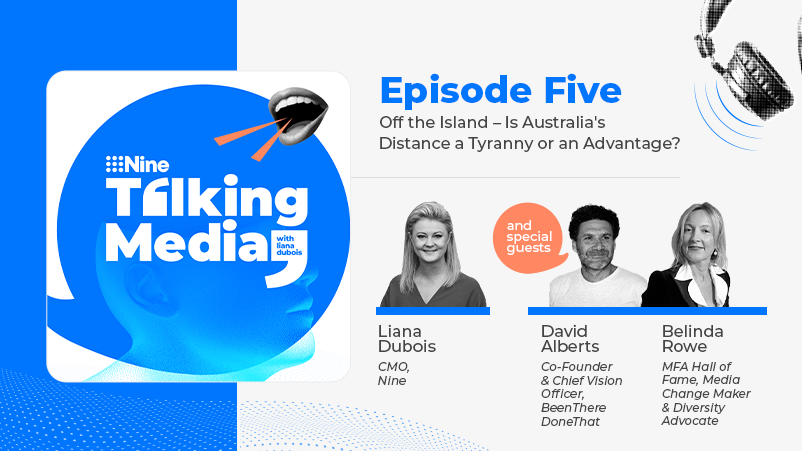B2B bust-up: Third of B2B marketing budgets globally now spent on brand, says LinkedIn study, but Australian sales teams rule roost on performance marketing warn marketers, agencies

LinkedIn's Amy Mills, Forrester Researcher's Daryl Wright, Autodesk's Ljubica Radoicic and Green Hat's Joel Thomson on brand challenges facing B2B marketers
When it comes to investing in brand, Australia's B2B marketers know they are doing the wrong thing by over-investing in performance and demand generation marketing. Sales voices shout them down each time and B2B marketers lack the internal clout to fight back. It's an especially acute problem in the technology sector and for subsidiaries of international brands. B2B marketers know they need to prime 95 per cent of their prospects and customers who are not in market to buy at any given time for when they do become active – and to be in the consideration set for B2B buyers that are often 70 to 80 per cent along their purchase decision journey before vendors even know they are in the market. Now a new global B2B marketing study by LinkedIn demonstrates how important brand is to B2B marketing around the world. For local marketers battling the shorter-term agenda from powerful sales teams, a new benchmarking tool pledges to help them mount better business – and sales – impact counteroffensives inside their organisations.
What you need to know
- Globally, B2B companies are investing about 30 per cent of their marketing spend into brand activity, but Australia's B2B marketers say they struggle to shift spend funds away from performance and field marketing, even though they know it is the right thing to do.
- The reason: sales leaders simply have more clout. "Sales are not shrinking violets," says Green Hat's Joel Thomson.
- There are exceptions per APAC's Director of Marketing at the $43bn tech giant Autodesk - Ljubica Radoicic says the firm is seeing "greater conversion of leads and demand activity" because of always-on brand campaigns.
- This is happening in the context of an increasingly complex buying environmen and lengthening sales cycles.
- The era of negotiating with a single B2B decision maker has long given way to the need to navigate a complex buying ecosystem.
- A new LinkedIn study of global B2B trends - The B2B Benchmarking Report - finds that marketing budgets are growing, however, and it comes with the promise of a new scorecard tool to help marketers benchmark their performance against their competitive set.
- The study also found greater pressure on marketers to deliver more specific revenue outcomes, as opposed to being judged on more traditional marketing metrics.
"Sales leaders are not shrinking violets. They have a very loud voice, they carry a number, they will be generally listened to. It takes a strong personality with a sound strategic argument, and the commitment and conviction that goes with that to fight their corner."
B2B CMOs are allocating almost a third of their spend to brand, according to LinkedIn’s global B2B marketing survey, released this morning. But that commitment to brand too often stops on the shores of Terra Australis say local marketers and agencies. B2B marketers told Mi3 they know their companies should be spending more on brand but say they lack the organisational clout to overcome the objections of sales leaders whose arguments hold more weight with company leaders.
And all of this is happening in the context of a B2B buying ecosystem which is more complex than ever, and where the time to close deals is blowing out, according to Forrester Research's Daryl Wright, Principal Analyst, Demand and Account-based Marketing.
Sales in B2B markets involve multiple purchasers and that complexity kicks in early with Wright saying that sales as small as $5000 typically involve three stakeholders. That complexity scales quickly with a bigger price tag. "Most sales processes incorporate three vendors, four people inside the business, four people involved outside the company, and four departments.”
For the larger deals you can double those numbers, he says.
"The other thing that happened during the pandemic, particularly in the Asia Pacific region, was the seniority of people on those committees increased."
He said that in addition to being more complex, buying cycles are taking a lot longer. “At the moment the average is about four months overall to make a buying decision with over 17 interactions across those buying groups.”
B2B brand strength
According to Brand Finance in its recently released Global Most Valuable B2B Brands Index 2023, the top 100 B2B brands account for $2tn in total brand value. That includes brands that are principally B2C in nature but have a significant B2B component to their business such as Amazon (ranked 2nd in the top 100 B2B brands by Brand Finance and for which 24 per cent of its value is B2B). Likewise for Samsung which is ranked 10th and just over a a third of its value (36 per cent) comes from B2B. Indeed, the majority of the top 100 B2B brands are blended, while just under a third (32/100) are B2B pure plays.
In its report, Brand Finance says B2B brands lag B2C brands in terms of brand contribution to business value, which it says presents an opportunity for brand-led growth in business value. "The top 100 B2B brands account for $2 trillion in brand value accounting for 12 per cent of the $17 trillion in business value while this ratio is 17 per cent for B2C brands ($2.8tn brand value /$16 trillion business value).
"Closing this gap is worth an additional $0.9 trillion in brand value. While not entirely surprising, it highlights the potential for B2B brands to drive additional value to the business by closing the gap with their B2C peers," says the Brand Finance report. It says the returns of highly branded organisations - companies with a higher brand value to business value ratio - outperform the S&P 500. It says there's "significant value to be unlocked for B2B businesses."
Globally at least the message is resonating and is reflected in the shifting allocation of budgets to brand in order to prime long-term demand versus the short agenda of sales teams. Like the digital industry's dire blot on falling for last-click attribution to credit a media or sales channel for triggering an action, sales teams are equally impervious to the volumes of marketing effectiveness case studies and research that shows their next sale - and commission cheque - likely comes from earlier marketing and brand efforts priming consideration and future demand. It's behavioural economics and how mind and memory works 101.
The new LinkedIn study suggests that brand spend captures a significant share of B2B marketing budgets which it breaks down as:
- Lead generation 36 per cent
- Brand 30 per cent
- Demand Generation 20 per cent
- Account based marketing (ABM) 15 per cent.
"B2B leaders are looking at the full funnel in their prospecting efforts to ensure success," says LinkedIn in the report.
Most of the focus — 70 per cent — is on generating new business but that rises to a whopping 85 per cent in the tech sector where marketing budgets fell 26 per cent in total spend last year, and are still in the doldrums. Tech's cuts contrast to the the rest of the B2B sector where 60 per cent of marketers says budgets will rise this year.
LinkedIn also found that those budgets come with greater expectations: "Nearly half B2B CMOs and CFOs say the CMOs are expected to be able to demonstrate marketing impact on the bottom line and have a more direct role in driving revenue and growth."
“We're seeing a greater impact and conversion of our leads and demand generation activity, because we have always-on brand campaigns supported by thought leadership."
While local B2B marketers overwhelming told Mi3 they struggle to win the brand argument - most did not want to be named - there were rare exceptions.
Says Ljubica Radoicic, Director APAC Marketing and CX at the $43bn tech giant Autodesk: “We're seeing a greater impact and conversion of our leads and demand generation activity, because we have always-on brand campaigns supported by thought leadership."
“I think that's the essence of our brand strategy and how we look at brand. It's not just placing ads out there, it's really rooted within the core of our customer experience and who we are as an organisation, and it relates to our credibility and thought leadership overall, " she said.
“Brand is super critical to telling the story of who we are as an organisation and our value proposition overall. And part of that is going back to our strategy that we really position ourselves as a long term partner, as a strategic partner and not just a vendor."
In that context, she says, brand and thought leadership becomes a key part of of the company’s go-to-market strategy, which she describes as a "brand to demand" approach, a term used increasingly by those B2B marketers trying to shift short-term sales mindsets.
Ancient grudge, new mutiny
But Radoicic is the exception, not the rule. The question vexing many in Australia's B2B marketing community is how to get to the point where they can replicate the approach of Autodesk and others like DocuSign's "risky shift from lower funnel to brand" Salesforce's success in "operationalising long-term brand investment" and SAS's "marketing job on marketing".
Marketers MI3 spoke with this week delivered a consistent message: They recognise the importance of the Ehrenberg-Bass 95-5 rule that suggests only five per cent of any B2B company's customers are actively buying at any given time, and that they need to build awareness and consideration with the vast bulk of prospects who will be opening their cheque books in the future. And they have been hearing from research analysts like Forrester and Gartner for over a decade that B2B buyers are often 70-80 per cent into the buying journey before vendors even know they are in market.
Despite this, local B2B marketers lament they are principally assessed on their ability to generate demand inside a single quarter and hand across marketing qualified leads to the sales team. The problem compounds the further the business is away from corporate head office, which for Australian marketers working for US and European companies, is the distance to the sun.
While almost universally B2B marketers acknowledged the limitations of current approaches, none would speak publicly due to the internal company sensitivities - read blowback from their powerful sales colleagues.
B2B agency partners, however, are across the power tussle.
"Sales leaders are not shrinking violets, " says Joel Thomson, Strategy Director at B2B agency Green-Hat. "They have a very loud voice, they carry a number, they will be generally listened to. And it takes a strong personality with a sound strategic argument, and the commitment and conviction that goes with that to fight their corner."
Thomson said it would take "an uncommon intelligence" not to understand the majority of your buying market is not active today.
"The people who are going to convert aren't out there today. So you need to have an investment activity to create awareness for when they are. CMOs need to be presenting this information internally in a way that's digestible," he says.
A big part of the problem is how marketing communicates with sales, Thomson argues.
"As a principle, 95-5 is a really clear idea that sales leaders will get," he says. Important caveat: marketers need to explain to sales that it doesn't mean they are going to spend 95 per cent of their budget on brand building and awareness, he says.
While the issue is especially pronounced in the IT sector, the subservience to sales is seen across the B2B specrtum in Australia, says Thomson.
"There are only a couple of examples where CMOs have got a really strong enough hold of the reins, and they're controlling that mix of advertising spend between the brand and the tactical - the long term and the short term, if you like. They also tend to have a strong enough relationship with sales and a loud enough voice at the table to drive that conversation."
There is a also a wider issue beyond the sales relationship, says Amy Mills, LinkedIn ANZ Director of Online Sales. In addition to being able to tie the brand activity to the sales outcome, she told Mi3: "CMOs need to increase their financial fluency overall in order to start that conversation with the C-suite to drive that investment."
CMO Benchmarking
More broadly on the new global B2B Benchmarking Report findings, Mills said LinkedIn is launching a CMO Scorecard that should at least equip B2B CMOs with ammunition for their arguments. It is designed to enable brands to benchmark performance against a competitive set, and ideally prove and improve the business impact of brand investments.
According to Mills, the new CMO Scorecard will provide brands with the creative media and outcome metrics that they should measure to show the effectiveness of their brand advertising.
"Our approach is going to focus on three key components - the first one will be creative. Most of our studies show that creative is most important to drive marketing effectiveness. So we're going to score creative impact by measuring attention, branding and the linkage to message association or key buying situations.
The second aspect of the scorecard after creative was media, she said. "It's really looking at driving the marketing effectiveness of media, which accounts for roughly 40 per cent of campaign effectiveness. When we're looking at scoring media impact, we're going to be measuring effectiveness and efficiency across the board.
The final scorecard component was on sales outcomes: "We're looking at sales outcomes, we want to score outcomes by measuring marketing metrics such as leads generated, or sales metrics, like meeting influence, or a number of connection requests accepted and now responded."
The tool will also include talent metrics, she said.



